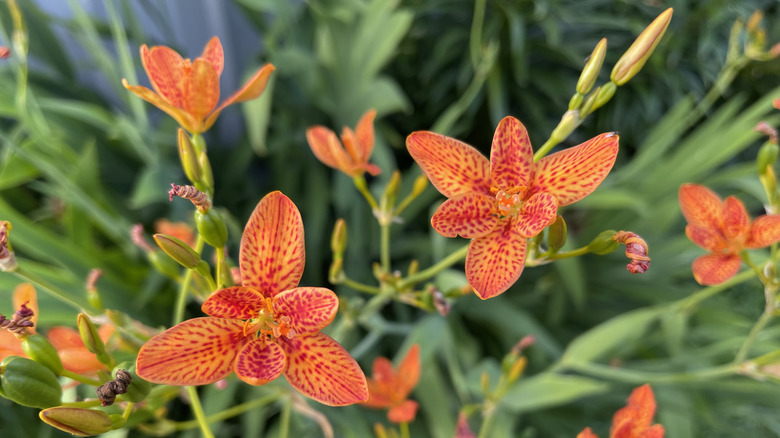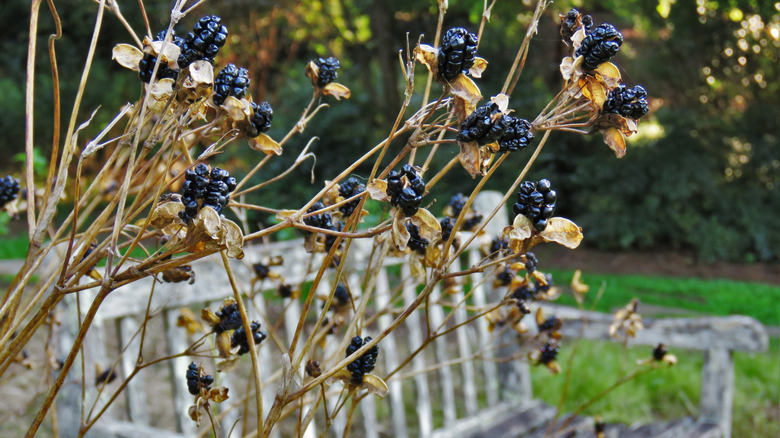Cut Back Blackberry Lily In The Fall For A Stronger, Less Invasive Plant
Blackberry lily (Iris domestica), known for its vibrant orange blooms and unique seed pods that look just like blackberries, is considered invasive throughout certain parts of eastern North America. The flower's ability to self-sow is what contributes to this invasive status. Although the seedlings are easy to spot and remove by hand, you can save yourself a lot of work by simply cutting the plant back in the fall. Cutting back before the seed pods mature will help stop the self-seeding process and prevent the flower from spreading to unwanted areas.
Blackberry lily is a gorgeous perennial to grow for stunning orange color in your yard or garden and is suitable for Hardiness zones 5 through 10. When it is cut back properly, you will reap a number of additional benefits. Things like limp foliage and a rotten crown can be avoided, once you discover the best way to cut back perennials safely for healthy plants all year long. So if you've got some blackberry lily in your garden right now, it might be time to bust out the pruning shears and get to work.
Cut back blackberry lilies in the fall when they turn yellow
You can tell it's time to cut back your blackberry lily plant when the foliage starts to fade and turn yellow at the end of the growing season. This dying foliage is the perfect breeding ground for fungus and pests, so removing it as soon as you can is key to a healthy garden. Cut back the foliage until it's about 4-6 inches from the ground. You can use pruning shears or sharp garden scissors for this.
Cutting back seed pods before they open and spread should also be done as needed to help prevent self-seeding. Remember, although the pods look like blackberries, you should not snack on them. They are not edible and are actually toxic to humans and pets. That said, many choose to save the pods for use in dried or fresh floral arrangements. Over the winter, after cutting back your blackberry lily, the plant will enter a dormant period. Be careful not to overwater during this time to avoid root rot. But don't stress too much — there are all kinds of helpful ideas to make sure you never overwater your plants again.

